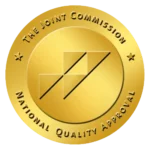Weathering the Storm: Understanding PTSD
PTSD, or post-traumatic stress disorder, is a mental health disorder that develops after a frightening or shocking event. It affects millions of people, including children, in the United States.
People with PTSD may have symptoms like bad dreams, flashbacks, or anxiety. They might also avoid things that remind them of the event. PTSD can make life hard, but treatment such as therapy sessions can help people feel better and cope with what happened.
Key Takeaways
PTSD affects mental and physical health after a traumatic event, disrupting daily life. Here’s what you need to know:
- PTSD was first recognized as a disorder in 1980.
- Emotional and cognitive symptoms vary, affecting daily functioning and relationships.
- Treatment options such as therapy, support groups, and alternative practices such as exercising ensure holistic healing.
The Haven Detox-Little Rock is here to offer you the help you need. Call us today at (501) 271-3342 to reserve your place in our program.

History of Post-Traumatic Stress Disorder
According to the National Institute of Mental Health (NIMH), the history of post-traumatic stress disorder (PTSD) traces back to its recognition in 1980. PTSD was documented in the Diagnostic and Statistical Manual of Mental Disorders (DSM-III) by the American Psychiatric Association. The term gained prominence, resonating with the aftermath of the Vietnam War. Earlier wars had coined phrases like “soldier’s heart,” “shell shock,” and “war neurosis,” which all describe what is now known as PTSD.
PTSD is linked to the impact of traumatic events on mental health. Its symptoms include anxiety disorders and mental health problems. Notably, it affects not only adults but also children and teens. Traumatic situations, such as car accidents or combat experiences, contribute to its onset. Understanding PTSD has also revealed its connections with substance use and other mental disorders.
Statistics and Prevalence
Understanding the prevalence of post-traumatic stress disorder (PTSD) provides insights into its impact on the U.S. population. Following traumatic events, most individuals won’t develop PTSD. However, the National Center for PTSD states that approximately 6 out of every 100 people may experience PTSD at some point in their lives.
Many individuals recover with effective treatment, underscoring the importance of accessible mental health support. On an annual basis, around 5 percent of U.S. adults live with PTSD, amounting to approximately 13 million Americans in 2020. Notably, women face a higher risk, with 8 out of 100 experiencing PTSD, compared to 4 out of 100 men, attributed in part to the nature of traumatic events they may encounter, such as sexual assault.
Symptoms of Post-Traumatic Stress Disorder
Post-traumatic stress disorder can bring various symptoms that affect a person emotionally, physically, and cognitively. Understanding these symptoms is crucial for recognizing and addressing the challenges individuals may face after a traumatic experience.
Emotional Symptoms
People experiencing PTSD may grapple with their emotions. Upsetting memories from the traumatic situation can flood their minds, causing great distress and, in some cases, suicidal thoughts. Emotional signs may include chronic feelings of fear, sadness, or anger. The person might feel on edge, constantly alert to potential danger. Special events or situations may trigger strong emotional reactions, making it difficult to cope with daily life.
Physical Symptoms
The impact of PTSD extends beyond emotions, affecting the body as well. Individuals may suffer from physical symptoms like headaches, stomachaches, or muscle tension. Sleep disturbances are common, with nightmares and difficulty falling or staying asleep. The body’s heightened stress response can increase heart rate and sweating, even in non-threatening situations.
Cognitive Symptoms
PTSD can create cognitive challenges, influencing how a person thinks and processes information. Confusing thoughts may persist, making it hard to concentrate or make decisions. Flashbacks, where the person feels like they’re reliving the traumatic event, can be distressing. These cognitive symptoms often interfere with daily activities and may contribute to feelings of isolation.
Understanding the types of PTSD symptoms is essential for proper diagnosis and support. Notably, people of all ages, not just adults, can experience similar symptoms.
Environmental and Societal Factors Influencing PTSD
Environmental and societal risk factors play a significant role in influencing the development and persistence of post-traumatic stress disorder (PTSD). Exposure to trauma, such as a car accident or an unexpected death, can trigger the onset of PTSD symptoms. Physical abuse and other traumatic experiences contribute to the development of acute stress disorder, a precursor to PTSD.
Personal factors, including one’s resilience and unhealthy coping mechanisms such as self-harm, also play a crucial role. Environmental factors like societal support and access to mental health treatment resources can either mitigate or exacerbate PTSD.
Substance abuse is another factor that can complicate the PTSD experience and contribute to the severity of symptoms. Understanding these factors is vital for creating effective strategies for prevention, intervention, and support for people dealing with the aftermath of trauma. Monitoring blood pressure is also essential, as PTSD can impact physical health.
The PTSD Spectrum
Post-traumatic stress disorder (PTSD) can manifest in various forms, each with its distinct characteristics. The following are the types of PTSD:
Acute PTSD: Acute PTSD is a short-term mental illness condition where symptoms emerge within three months of a traumatic event but last for less than three months.
Chronic PTSD: Chronic PTSD involves symptoms that last for three months or more, significantly impacting daily life. These symptoms may wax and wane over an extended period, showcasing their fluctuating nature.
Complex PTSD: Complex PTSD results from prolonged exposure to trauma, often involving repeated instances of abuse or violence. It encompasses a broader range of symptoms, including difficulties in forming relationships and a distorted self-perception.
Understanding the different types of PTSD is essential for tailoring effective treatments. That offers support for individuals experiencing the various manifestations of this challenging condition.
Diagnostic Criteria for PTSD
Diagnosing post-traumatic stress disorder involves understanding specific criteria and navigating potential challenges due to the complexity of this mental health condition.
To diagnose PTSD, mental health providers refer to criteria outlined in diagnostic manuals like the Diagnostic and Statistical Manual of Mental Disorders (DSM-5). These criteria include experiencing a traumatic event, re-experiencing symptoms, avoidance behaviors, negative changes in mood and thinking, and heightened arousal.
Potential Challenges in Diagnosis
Diagnosing PTSD can be challenging due to various factors. Some individuals may not recognize or disclose their symptoms, making it harder for mental health providers to assess their condition accurately. Moreover, PTSD symptoms can overlap with other mental health conditions, complicating diagnosis. Additionally, cultural differences and stigmas surrounding mental health care may influence individuals’ willingness to seek help or disclose symptoms.
Mental health providers employ a combination of methods, including interviews, questionnaires, and observation, to diagnose PTSD. They may also conduct a physical exam to rule out other medical conditions contributing to symptoms. Navigating these challenges requires a comprehensive approach to mental health care.
Treatment Options
Addressing post-traumatic stress disorder involves a variety of treatment options tailored to individual needs and circumstances. Here are some available treatment options for people suffering from PTSD:
Psychological Therapy for PTSD
Therapy programs involve talk therapy, such as cognitive therapy, which helps patients identify and challenge harmful thought patterns and ideas linked with traumatic events. Eye movement desensitization and reprocessing (EMDR) involves remembering distressing experiences while focusing on external stimuli like hand movements or sounds. This therapy aims to process traumatic memories in a less distressing way.
Group therapy is a type of therapy that offers an encouraging setting where individuals can share experiences and coping strategies with other members facing similar challenges. Other kinds of therapy include individual and family therapy.
Medication and Support Groups
Selective serotonin reuptake inhibitors (SSRIs) are antidepressants that can help alleviate symptoms of PTSD by regulating serotonin levels in the brain. Anti-anxiety medications may help manage feelings of anxiety and panic associated with PTSD, providing relief from distressing symptoms.
In addition to these treatment options, social support and participation in support groups like the National Alliance on Mental Illness (NAMI) can play crucial roles in the recovery process. Support groups may be enabled by mental health professionals or organized informally within communities.
Alternative and Complementary Treatments
In addition to traditional therapeutic approaches, alternative and complementary treatments play a significant role in managing post-traumatic stress disorder (PTSD). These holistic habits can help you to improve your mental health.
Mindfulness and Meditation
Mindfulness techniques involve staying present in the moment without judgment, and meditation focuses on cultivating a calm and focused mind. These practices encourage individuals with PTSD to observe their thoughts and feelings without becoming overwhelmed. Regular mindfulness and meditation can promote relaxation, reduce anxiety, and improve overall mental resilience.
Yoga and Physical Exercise
Yoga combines physical postures, breath control, and meditation, creating a mind-body connection. It has shown positive effects on reducing PTSD symptoms by promoting relaxation and improving physical well-being. Engaging in physical exercise, whether through yoga or other activities, releases endorphins, alleviating stress and contributing to a more balanced mood.
These alternative and complementary treatments empower individuals to take an active role in their mental health. Integrating practices like mindfulness, meditation, yoga, and regular physical exercise into a comprehensive approach to PTSD management can provide a holistic foundation for healing and resilience.
Frequently Asked Questions (FAQ)
Does PTSD ever go away?
PTSD symptoms can improve over time with proper treatment. While some individuals may fully recover, for others, symptoms may persist.
Primary treatments, including medication and cognitive behavioral therapy, can help manage and alleviate symptoms. Working closely with a doctor or mental health professional, individuals can develop strategies to cope with PTSD, allowing them to lead fulfilling lives despite the challenges they may face.
What does PTSD do to a person?
PTSD, or post-traumatic stress disorder, affects a person’s mental and emotional well-being. It can cause intense anxiety, nightmares, and flashbacks related to a traumatic event. A person may become hyper-vigilant, avoiding situations that trigger memories.
Cognitive difficulties, like trouble concentrating and negative thoughts, often arise. Physical symptoms such as headaches and insomnia can impact daily life. Overall, PTSD can significantly disrupt a person’s ability to function, leading to emotional distress and challenges in relationships, work, and daily activities.
What is PTSD, and what causes it?
PTSD is a type of anxiety disorder that happens after an individual experiences or witnesses a traumatic incident. Such events include accidents, combat, natural disasters, or violence. PTSD causes intense emotional distress and disrupts daily life. The condition can result from feeling helpless or fearful during the traumatic experience.
It affects individuals differently, with symptoms like flashbacks, panic attacks, and severe anxiety. Understanding PTSD and its causes is crucial for offering effective support and treatment options to those affected.
Break-Free from PTSD at The Haven Detox-Little Rock
Post-Traumatic Stress Disorder can impair a person’s ability to achieve their goals. If you or someone you know struggles with PTSD, reach out to The Haven Detox-Little Rock.
We offer mental health treatment programs that include counseling, therapy programs, and the support you need to overcome PTSD effects. Our residential rehab provides around-the-clock care and treatment for long-term recovery and addresses underlying health problems.
Call us now at (501) 271-3342 to reserve your place in our program.





